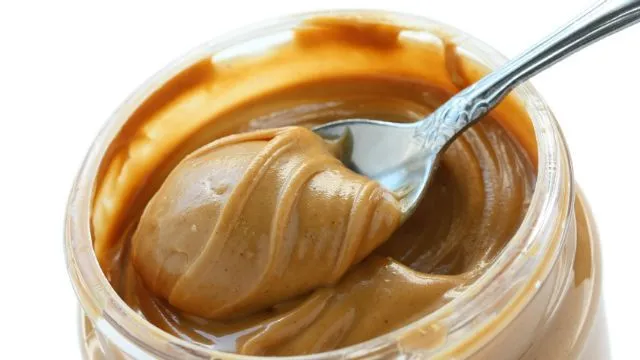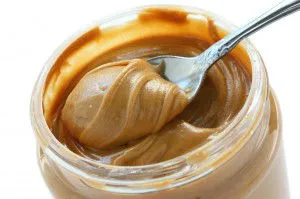
- Share on Facebook477
- Share on Pinterest
- Share on Twitter
The classic peanut butter and jelly. Many Americans grew up eating this famous sandwich at least a couple times a week, if not every day. It is one of the most common items to be found in a lunchbox or brown paper bag, and remains a favorite of children and numerous adults to this day.
However, while peanuts do have their health perks, many peanut butter brands you’ll find on store shelves are lacking in the nutrition department. Also, when it comes to jelly… well, there are MUCH healthier, delicious pairings you can make with peanut butter.
Here’s a brief rundown:
Conventional peanut butters – beware
If you look at the labels of those jars of creamy or chunky peanut butter, you’ll likely find many other ingredients besides peanuts, oil and salt. Many peanut butter brands are chock-full of sugar, which is a main player in obesity, type 2 diabetes and rising rates of other chronic illnesses. It is a known immune system suppressant, and is also linked to depression and certain cancers.
Furthermore, many peanut butters are made with soybean oil – which is likely derived from genetically modified soybeans. And, if the product in question says “peanut butter spread,” there are likely a host of preservatives and other additives in the mix.
Real peanut butter – enjoy, but in moderation
Peanuts – which are actually legumes and not nuts – are rich in B-vitamins, vitamin E, and many minerals, including copper, manganese and phosphorus. They also contain numerous antioxidants, including the longevity-linked flavonoid resveratrol, and heart-healthy CoQ10. For this reason, real, organic peanut butter – made with organic peanuts, a high-quality oil and sea salt – can be a great and healthy treat.
However, peanuts do contain natural aflatoxins, which are linked to stunting growth in children at high blood levels. So, although it is tasty, keep the amounts moderate, especially for the little ones.
As even organic peanut butters may contain contaminants, which can be picked up during manufacture and packaging, your best bet is to make your own! The following recipe can be made with peanuts, or any raw, organic nuts that you roast yourself at home. Try almond butter, or sunflower seed butter, for just a couple options.
Homemade Nut Butter
Ingredients:
- 2 cups of shelled, raw and roasted organic peanuts or nuts of your choice
- 2 tablespoons of coconut oil
- A pinch of Himalayan salt
Instructions:
- Use the food processor blade in your blender to chop the peanuts
- Blend in the oil and mix again
- Add a touch of Himalayan salt and a touch of coconut crystals to taste
- Store in the refrigerator or freeze (it will keep forever in the freezer)
What about jelly?
The overwhelming majority of jellies and jams on the market are brimming with sugar. For example, in the case of Smucker’s Concord Grape Jelly, there are 12 grams of sugar per tablespoon. Also, a look at the ingredient label will tell you that most of this is in the form of high fructose corn syrup.
This artificial type of sugar, common in processed foods, contains an imbalanced glucose to fructose ratio. Due to its structure, it is absorbed directly by the liver, where it is stored as fat. High fructose corn syrup is linked to weight gain, fatty liver, inflammation, spikes in blood sugar and a higher risk of type 2 diabetes. It has also been found to be highly addictive, and carries all of the other health ills of refined sugar.
One more thing: most jellies and jams use fruit juices, not real fruits – adding to the sugar content, and lowering the nutritional content.
While it is possible to make your own sugar-free jellies and jams at home, using substitutes like raw honey, stevia and molasses, instead, check out our delicious pairing ideas below.
Some great peanut butter (or other nut butter) pairings
Fresh fruit
Along with the well-known peanut butter and banana, many fruits pair marvelously well with peanut butter. Try some sliced apples, kiwi, dates, apricots or strawberries – or any of your favorite fruits – and you will be enjoying the crisp sweetness of the fruit, without all of the sugar of a jelly.
Raw honey
Peanut butter and honey is a yummy combination, indeed. Additionally, enjoying local, raw honey may help to desensitize you to allergens in your area, making those itchy eyes and runny noses a thing of the past. Honey has also been found to have significant effects in fighting colds and seasonal illnesses, and is laden with antioxidants to nourish optimal health.
Pickles
 Peanut butter and pickle is a combo loved by some, and detested by others. If this pair is one you enjoy, good news: pickles can provide a number of benefits, considering they are fermented. Choose an organic pickle variety which has been fermented (some have, some have not – check the label or call the manufacturer), and you will be providing your body with probiotics – which are imperative to both digestive health and the health of the immune system.
Peanut butter and pickle is a combo loved by some, and detested by others. If this pair is one you enjoy, good news: pickles can provide a number of benefits, considering they are fermented. Choose an organic pickle variety which has been fermented (some have, some have not – check the label or call the manufacturer), and you will be providing your body with probiotics – which are imperative to both digestive health and the health of the immune system.
One more thing: ditch the whole wheat bread!
Instead of making your sandwich on wheat bread, it may be worthwhile to try a gluten-free bread, or wrap, instead. Even if you are not intolerant to gluten – and many people are and do not know it – modern wheat has been linked to inflammation, addictive qualities, spikes in blood sugar and other dangers. So, if you want a truly healthy sandwich, it is not the way to go.
Is it time for lunch yet?
-The Alternative Daily
Sources:
http://www.whfoods.com/genpage.php?tname=foodspice&dbid=101
- Share on Facebook477
- Share on Pinterest
- Share on Twitter

